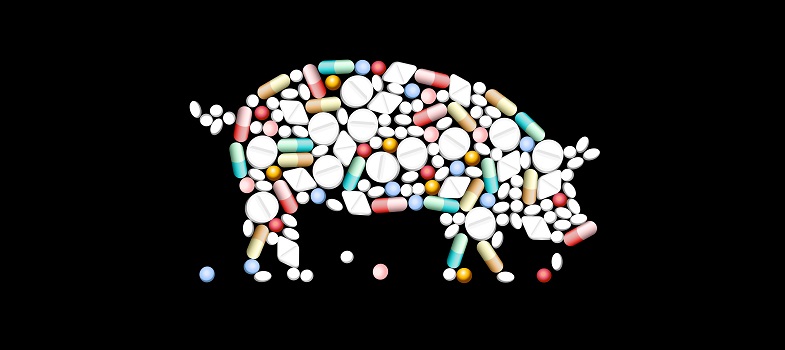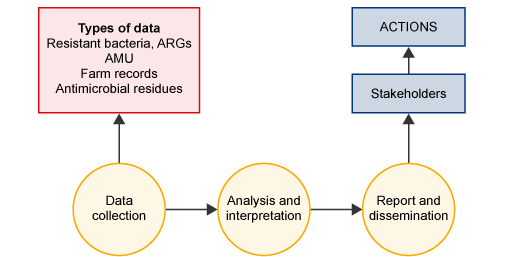1.1 Monitoring and surveillance to address the AMR challenge
As Figure 1 shows, surveillance is a method of systematically collecting data that can be used by stakeholders to take action by planning and implementing more effective, evidence-based public health policies and strategies relevant to the prevention and control of disease or disease outbreaks. The prompt dissemination of information to those who need to know is as essential as ensuring the quality, validity and comparability of the data.
Surveillance is not in itself a scientific research activity, although some research projects make use of data collected in surveillance systems. Sometimes, surveillance systems in low and middle-income countries (LMICs) are funded or operated by research organisations, which can lead to some confusion between what is surveillance and what is research. The main difference between research and surveillance is that research tries to generate new knowledge, whereas surveillance aims to monitor a known health issue and/or detect emerging health issues.
Surveillance and monitoring are critical components of the response to AMR. They allow for:
- assessing the scale of the AMR problem at a local, national or global level
- measuring patterns of AMR over time in a particular place or places
- informing public health policies on AMU
- improving health outcomes in people and animals.
What are the differences between monitoring and surveillance of AMR?
Monitoring is the continuous effort to collect data to detect changes or trends in the occurrence of AMR in order to inform decisions, such as, implementing mitigation measures. This continuous effort needs to be conducted efficiently.
Surveillance is a special case of monitoring where data are used to assess a status in response to a pre-defined threshold; above this threshold, action needs to be taken. Hence the key difference between surveillance and monitoring is that surveillance results in action being taken if findings indicate a significant change, whereas monitoring does not lead to action.
All surveillance is monitoring, but not all monitoring is surveillance.
Activity 2: Surveillance activities in your professional practice
What surveillance activities are you involved in in your professional setting?
1 AMR/AMU surveillance in animals: main concepts




